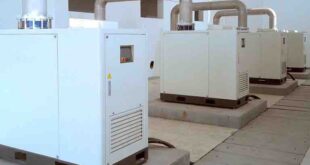Wayne Vincent discusses the importance of operators always using genuine parts on their engines
Genuine parts are made to withstand fuel flow and pressure specifications, undergo extensive testing to make sure they meet real world requirements and use high quality media, seals and water separation design. These parts are designed work together to maximise engine performance and component life.
A genuine part is approved for use by the original equipment manufacturer (OEM). In the case of Perkins, for example, it will include the Perkins trademark on both the part and packaging, as well as the Perkins hologram label.
Counterfeit — using confusingly similar packaging or the manufacturer’s trademarks — is just one type of non-genuine component.
Non-genuine parts include all reverse engineered or unauthorised versions of a part and can vary from genuine parts in several ways, for example, a replacement filter that isn’t correct to the latest aftermarket specification. They come with no guarantee of quality testing and may have different dimension or specifications.
Rising to the challenge
A typical engine running for 24 hours at 2,200rpm is under a lot of pressure. From the 160bar head gasket pressure — the equivalent of more than five Eiffel Towers — to the 38 million piston passes over the cylinder bores or the 80,000 litres of oil filtered, it’s all in a day’s work.
In such a tough environment, non-genuine parts introduce risks such as contamination, increased emissions, increased fuel and oil consumption and reduced performance and engine life.
Non-genuine in practice
Consider this example. A non-genuine filter changed twice a year for ten years at a 30% saving, saves £24.
However, the non-genuine part has 50% fewer media, fewer widely spaced pleats, a less rigid centre tube and a shorter design. It leads to media twisting and deforming, reducing media available for filtration, exceeding filter load and causing reduced filtration.
The particulates then bypass the filter, circulating and damaging injectors, increasing fuel consumption and reducing power. The potential damage could cost hundreds, or even thousands.
As emissions legislation becomes more stringent, for example with the imminent introduction of Stage V emissions legislation, the importance of proper engine maintenance increases. Even small differences in parts can have a big impact, as engines are sensitive yet important systems.
It’s time we learnt our lesson — on our engines and our artworks — some things just aren’t worth compromising.
Wayne Vincent is Head of Distribution Sales at DiPerk Power Solutions.
 Engineer News Network The ultimate online news and information resource for today’s engineer
Engineer News Network The ultimate online news and information resource for today’s engineer


